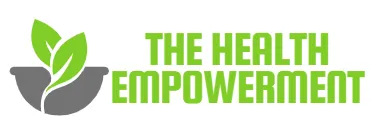
The Power of Exercise: Benefits, Types, and Tips for Staying Active
Introduction
Regular exercise is a vital component of a healthy lifestyle, offering numerous physical, mental, and emotional benefits. Staying active can help prevent chronic diseases, boost mood, and improve overall well-being. This article will explore the various advantages of exercise, the different types of physical activities, and offer tips for incorporating exercise into your daily routine.
The Benefits of Exercise
Physical Benefits:
Improved cardiovascular health: Regular exercise strengthens the heart, improves circulation, and lowers blood pressure, reducing the risk of heart disease and stroke.
Weight management: Exercise helps burn calories, aiding in weight loss, and maintaining a healthy weight.
Stronger muscles and bones: Physical activity, especially strength training and weight-bearing exercises, increases muscle mass and bone density, reducing the risk of osteoporosis and sarcopenia.
Enhanced flexibility and balance: Exercise can improve flexibility, balance, and coordination, preventing falls and injuries, especially in older adults.
Mental and Emotional Benefits:
Reduced stress and anxiety: Exercise releases endorphins, the body's natural feel-good chemicals, which help alleviate stress and anxiety.
Enhanced mood and self-esteem: Regular physical activity can improve mood, increase self-confidence, and promote a positive self-image.
Improved cognitive function: Exercise can boost memory, attention, and overall cognitive performance, reducing the risk of cognitive decline and dementia as we age.
Better sleep: Engaging in regular exercise can help regulate sleep patterns, leading to better sleep quality and increased energy levels.
Types of Exercise
Aerobic exercise: Also known as cardiovascular exercise, aerobic activities increase heart rate and breathing, improving cardiovascular endurance. Examples include walking, running, swimming, and cycling.
Strength training: These exercises target specific muscle groups to build strength and endurance. Examples include weight lifting, resistance band exercises, and bodyweight exercises, such as push-ups and squats.
Flexibility and balance exercises: These activities aim to improve range of motion, balance, and coordination. Examples include yoga, Pilates, and tai chi.
High-intensity interval training (HIIT): HIIT involves short bursts of intense exercise followed by recovery periods. This type of workout can offer significant fitness benefits in a shorter amount of time compared to traditional workouts.
Tips for Staying Active
Set realistic goals: Establish achievable, measurable objectives to help track your progress and stay motivated.Find activities you enjoy: Engage in exercises that you find fun and enjoyable, increasing the likelihood of staying committed to your routine.
Schedule regular workouts: Prioritize exercise by setting aside time in your daily schedule, aiming for at least 150 minutes of moderate-intensity aerobic activity or 75 minutes of vigorous-intensity activity per week, along with strength training exercises at least two days per week.
Get support: Find a workout buddy or join a fitness class to keep yourself accountable and make exercise a social activity.
Listen to your body: Pay attention to your body's signals and adjust your exercise routine as needed to prevent injury and burnout.
Conclusion
Exercise is a powerful tool for improving physical, mental, and emotional well-being. By understanding the benefits, exploring different types of activities, and incorporating regular exercise into your daily routine, you can reap the rewards of a healthier, more active lifestyle. Remember to consult with a healthcare professional before starting any new exercise program, especially if you have existing health conditions or concerns.

Copyright © 2023 The Health Empowerment. All rights reserved.
Disclaimer: Our website services, content, and products are for informational purposes only.
This website does not provide medical advice, diagnosis, or treatment.
Please consult a health professional before implementing any strategy discussed on this website.
The Health Empowerment makes no guarantees about the efficacy or safety of products or treatments written about.